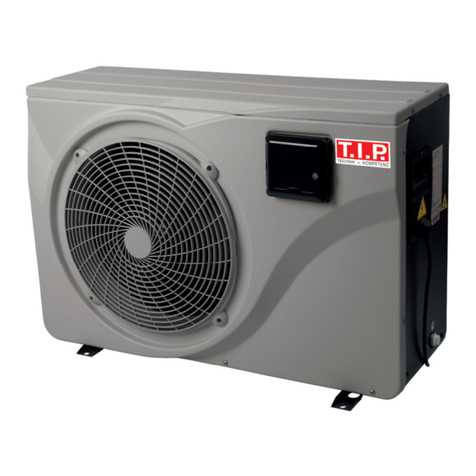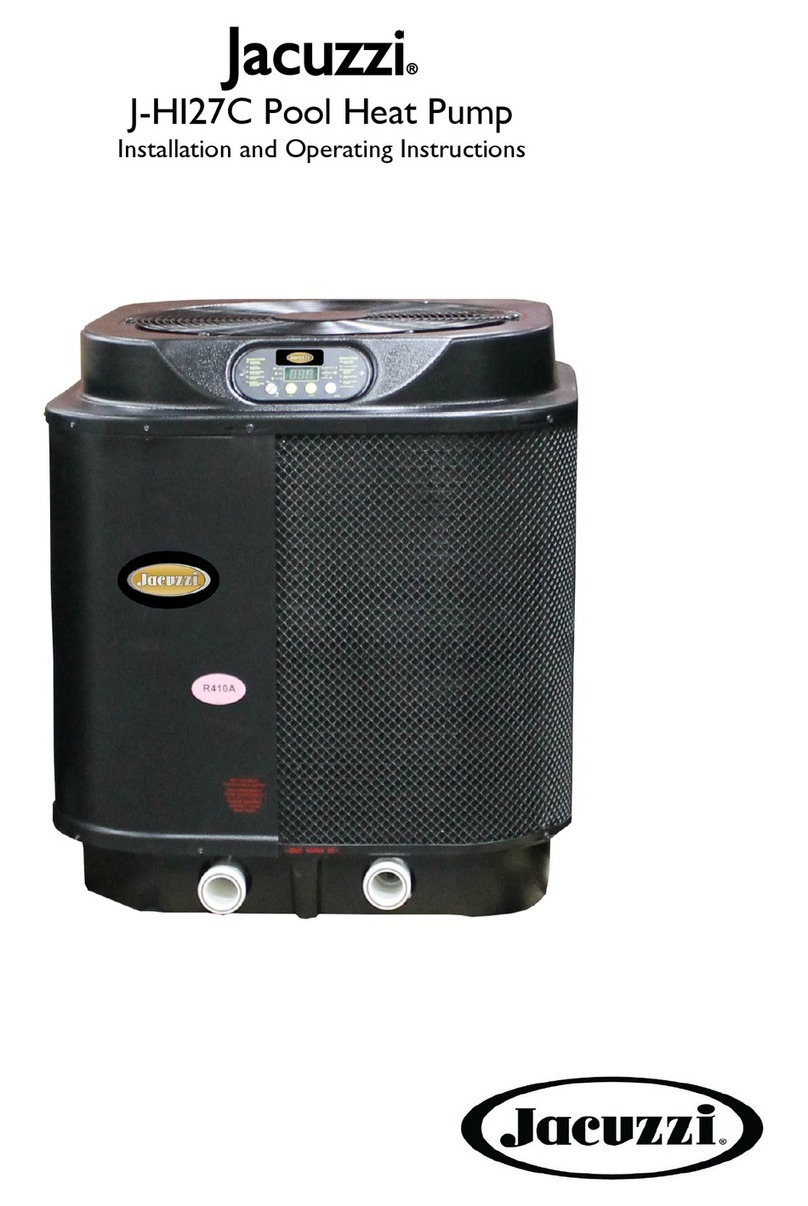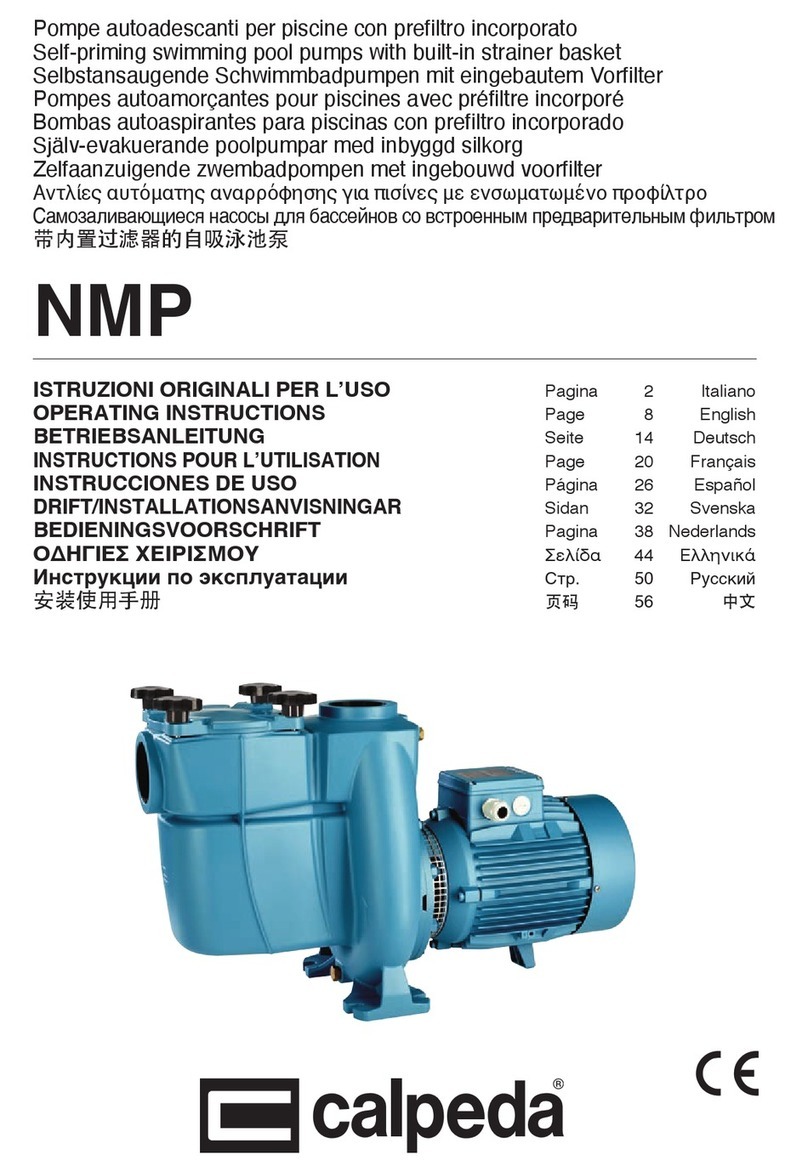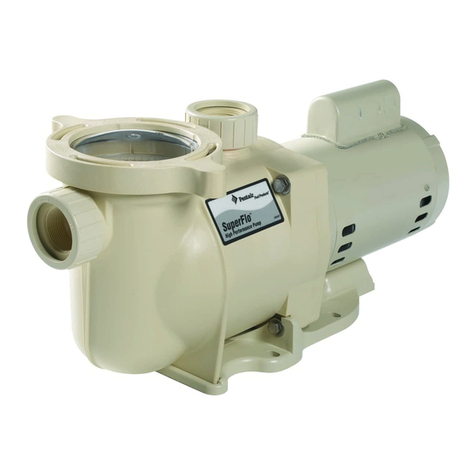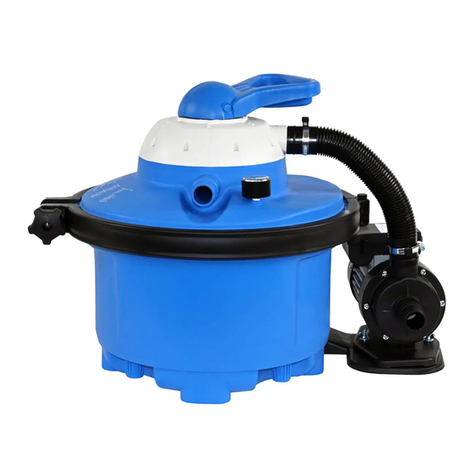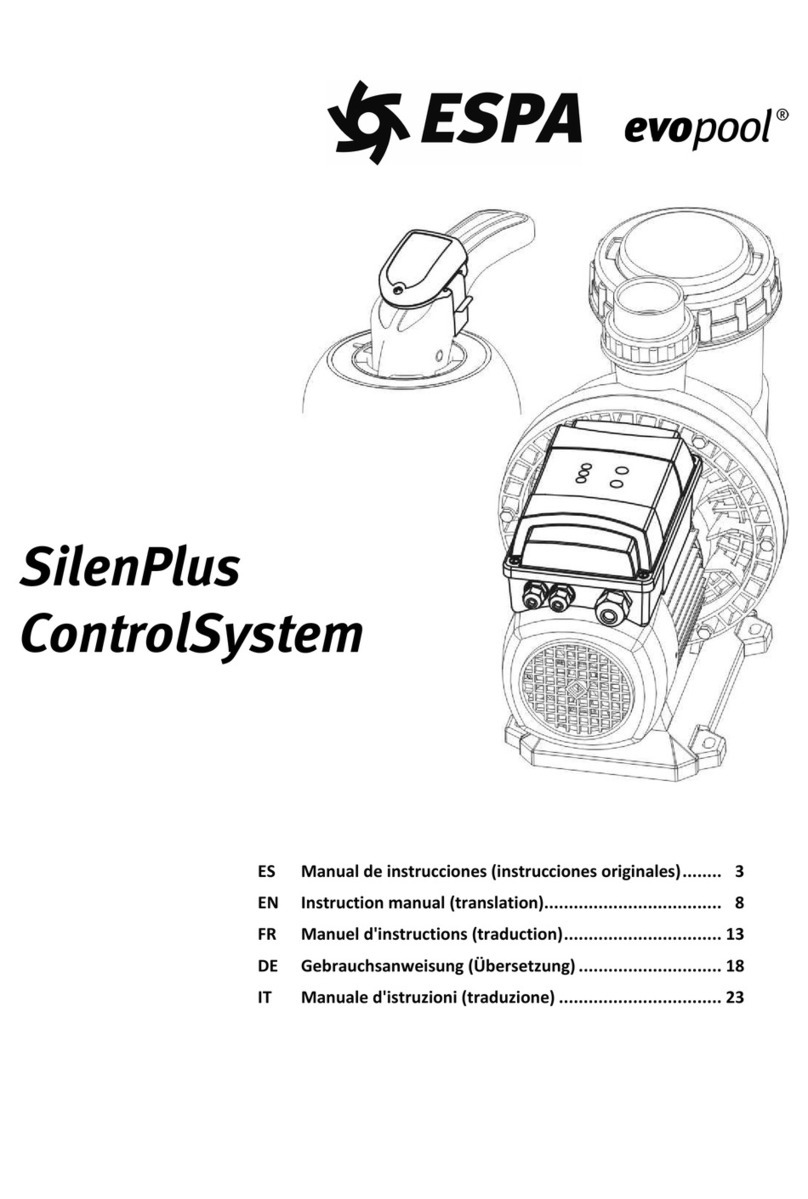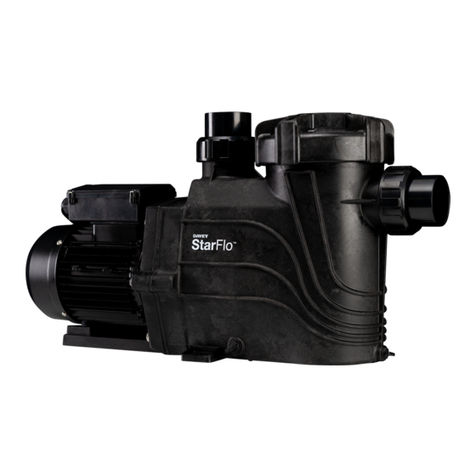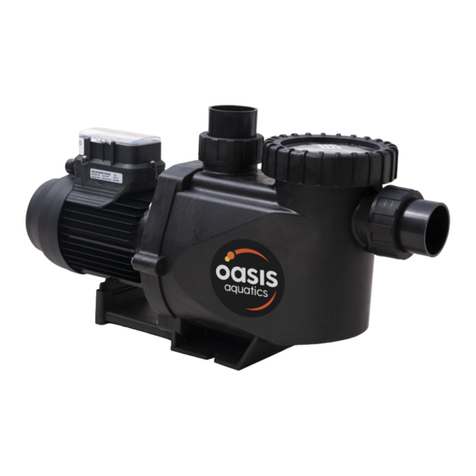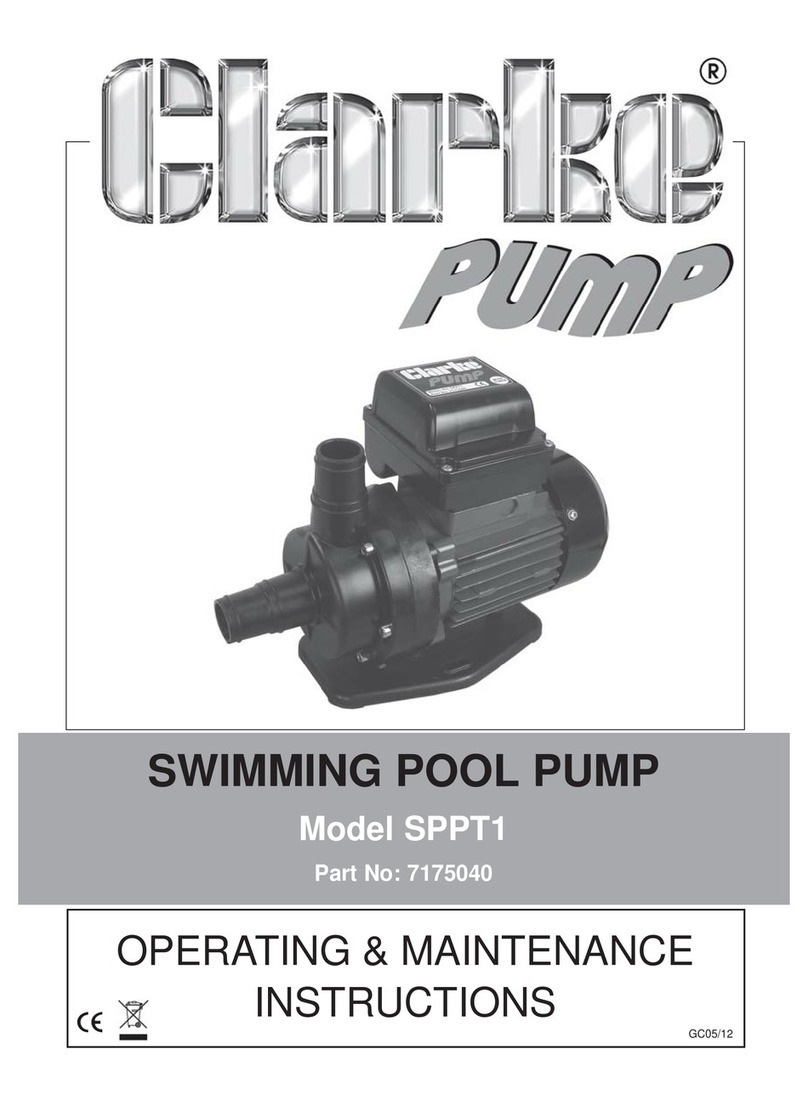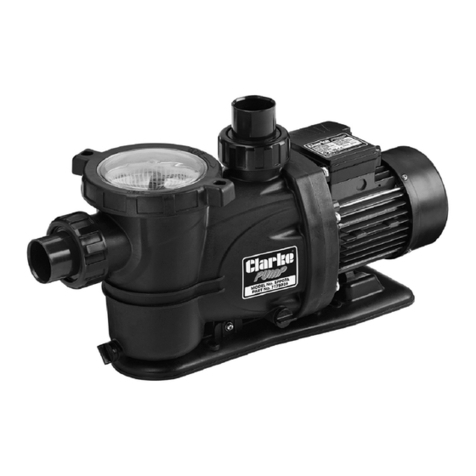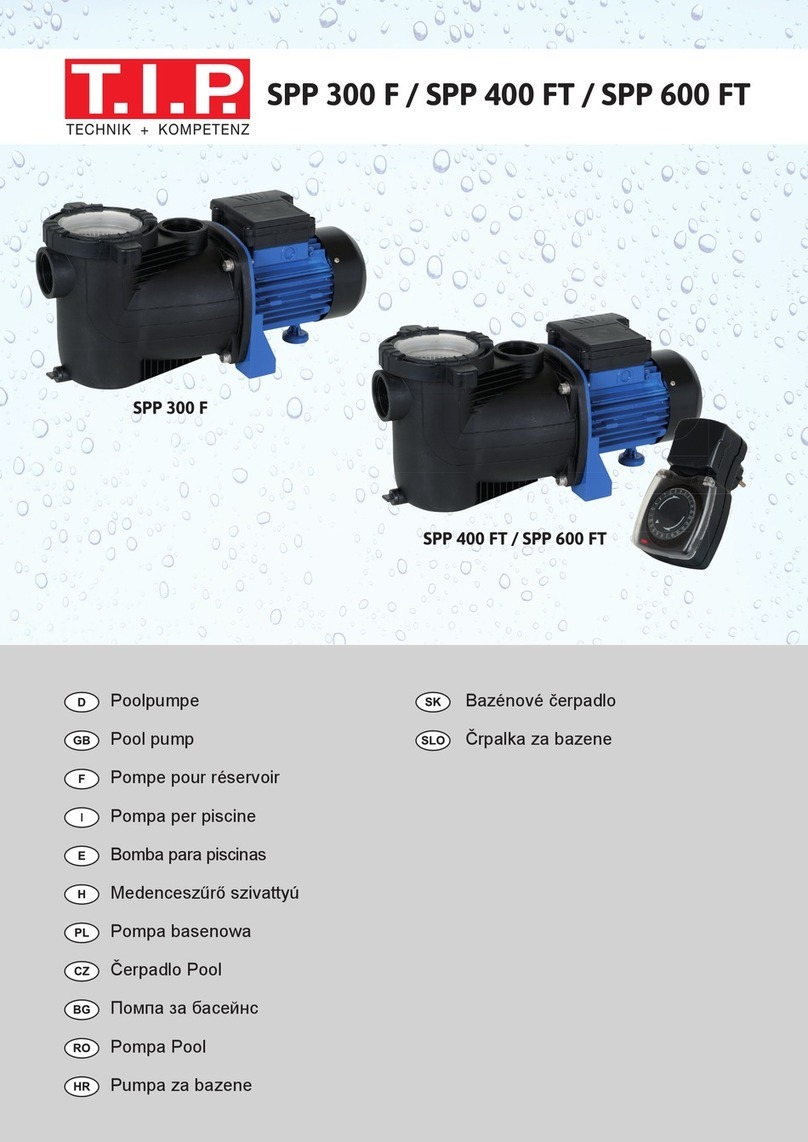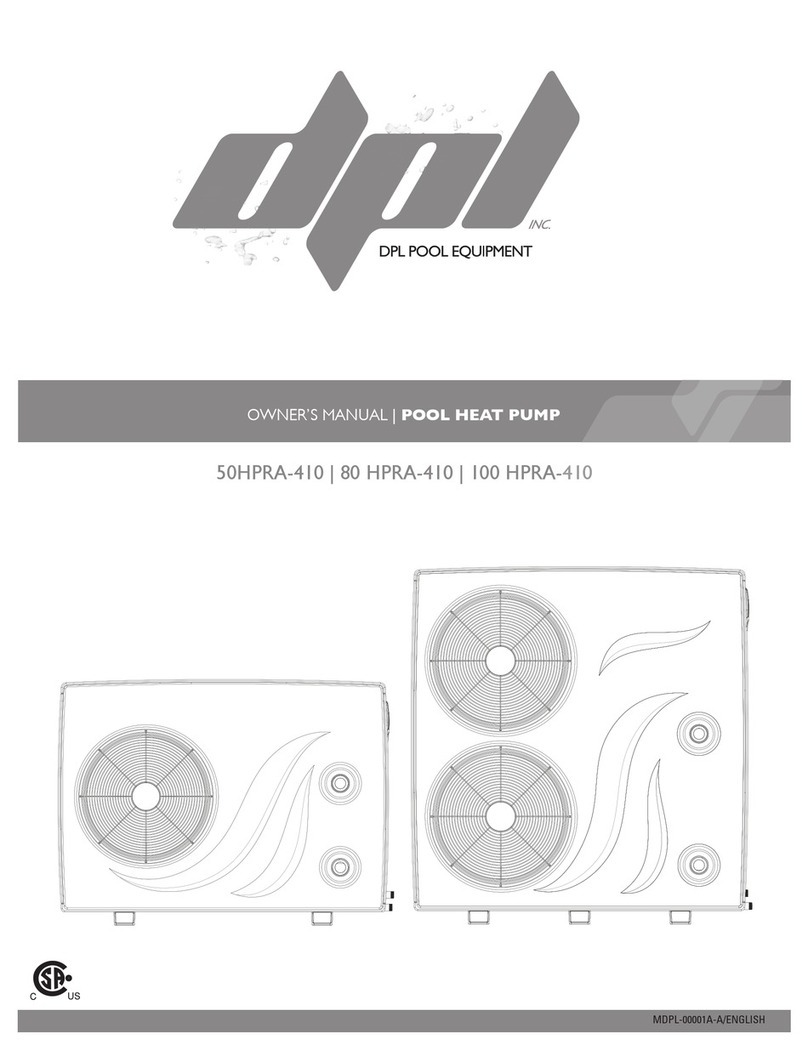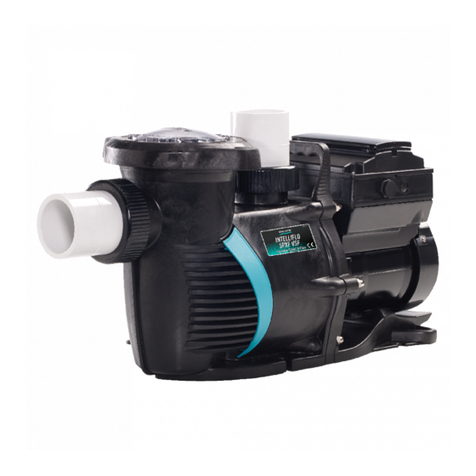
6
Parts & Service: 020 8988 7400 / E-mail: Parts@clarkeinternational.com or Service@clarkeinternational.com
ELECTRICAL CONNECTION
The pump should be located at a safe distance, (usually 2 metres), away from
the pool, and the power supply should be at least 3.5 metres from the pool. If
in doubt, please contact your electrical specialist and refer to the
International Electrical Commission (IEC) standard, (Electrical Installations for
Buildings-part 7), referring to ‘swimming pools and other basins’.
Avoid situations where the pump could become drenched with water as
neither the motor or terminal box are designed to be waterproof. Ensure the
pump & its cable do not create a safety hazard for people walking past it.
PIPE/HOSE CONNECTIONS
The pump inlet will be connected to the pool skimmer and/or pool drain
connection, depending upon the installation layout, and the discharge outlet
should be connected to your water filter.
The inlet and outlet adaptors supplied with the pump are designed to fit to
rigid pipe-work. The inner bore diameter of the adaptors is 50 mm. Therefore
pipes with the same nominal diameter should be used. These should be fixed
in place using a proprietary adhesive/sealant suitable for pressurised pipework
applications.
These can be extended with the use of suitable 50 mm I/D hose secured with a
worm drive clip. Ensure all connections are air tight. Tighten them enough to
secure the hose during pressurised operation, but not so tight as to crack the
plastic inlet/outlet connectors.
Where the pump is to be a permanent fixture, vibration and strain on adjacent
parts can be reduced by the insertion of a short flexible section of hose
between any rigid pipework and the immediate area of the pump.
Any air leaks in the suction line will inhibit priming and reduce the capacity of
the pump. Ensure there are no kinks in any flexible hose used.
The performance of your pump will be affected by the diameter of the inlet
pipe - any restriction will greatly reduce the flow. We recommend that you
always use a pipe diameter at least equal to, or greater than the diameter of
the pump connections i.e. 50 mm diameter.
To prevent unnecessary strain or possible distortion to the pump, ensure that
adequate support is provided to the hoses and or pipes. They will be
considerably heavier when filled with water.
It is suggested that suction and delivery isolation valves are fitted in order to
isolate the pump. A gate valve may be installed in-line on the delivery side
(outlet port) of the pump which can be adjusted as required to regulate the
flow of water and can assist in priming the pump.
Protect the pump and pipework from freezing with the addition of suitable
lagging. The formation of ice may cause serious damage.
